Subscribe to our Newsletter
Get regular stories, tips and solutions from Sustainable America and opt-in to receive roundups of the latest food and fuel news.

Jun 14th, 2012 | By Nicole Rogers

There is collective sense of excitement at a an early morning farmers market. Nothing tastes better than the freshest possible ingredients, raised with care. But it’s not only about taste. The benefits of eating local are many - healthy fresh food, supporting the local economy, and reducing the nation’s dependence on oil for transport, to name a few. And if you ask the founders of Strolling of the Heifers, local food systems and the sense of community they create can be a whole lot of fun.
Strolling of the Heifers, an organization that works to promote sustainable local agriculture, is best known for their annual parade. Scores of pretty heifer calves wreathed in flowers, along with farmers, future farmers, floats, and various farm animals amble through Brattleboro, VT each year on the first weekend in June (National Dairy Month). It is an extremely popular event and captures the spirit of what the organization is all about. Strolling of the Heifers cherishes local farming, seeking to ensure that families hold onto their farms and produce more generations of local farmers to feed Vermont.
The state’s commitment to the locavore movement may be paying off statistically. Strolling of the Heifers created the Locavore Index (represented by our graphic above) this year, which indicates per-capita presence of local food sources by state in the form of CSAs (Community Supported Agriculture programs) and farmers markets. Vermont tops the list.
You might think that a state like California would have a huge number of farmers markets and CSAs, and you would be right, but California also has a huge population. As you can see in the map above, they are number one in sheer quantity of farmers markets and CSAs, but they rank 41st on the Locavore Index (indicated by the bar graph) because of access per capita. The states that top the Locavore Index have the best ratio of farmers markets and CSAs to population. Higher rank equals better access to local foods for the residents of that state.
Prime farmers market season is upon us! Don’t miss out on the freshest produce, dairy and meat your community has to offer. Use one of these databases to locate your nearest Farmers Markets and CSAs:
Jun 10th, 2012 | By Aubrey Yee
Playing off the popularity of Al Gore’s “Inconvenient Truth” several concerned groups are now calling industrial agriculture the new ‘inconvenient truth’.
Wondering how we are going to continue to feed the 7+ billion people on this planet, a recent video by the University of Minnesota’s Institute of the Environment cites some alarming figures:
- More than 40% of the earth’s surface has been cleared for agriculture
- Global pastures cover 30 million km2–the size of the African continent
- Agriculture uses 60 times more land than urban and suburban areas combined
- Every year we use 2,800 cubic km of water on crops - its the biggest use of water on the planet, and major rivers and lakes are drying up
- Agriculture contributes more greenhouse gas emissions than all the planes, trains and automobiles on the planet combined.
http://youtu.be/hgmzV0E7ZoE
What are we to do? While there are no easy solutions, this video and others like it aim to elevate the global dialogue around this crucial issue quickly. The University of Minnesota group suggests initiatives around: incentives for farmers, precision agriculture, new crop varieties and drip irrigation. This is clearly a huge and complex issue, but one that will become increasingly present in international policy debates, and as a matter of survival, a reality we cannot ignore.
Jun 7th, 2012 | By Aubrey Yee
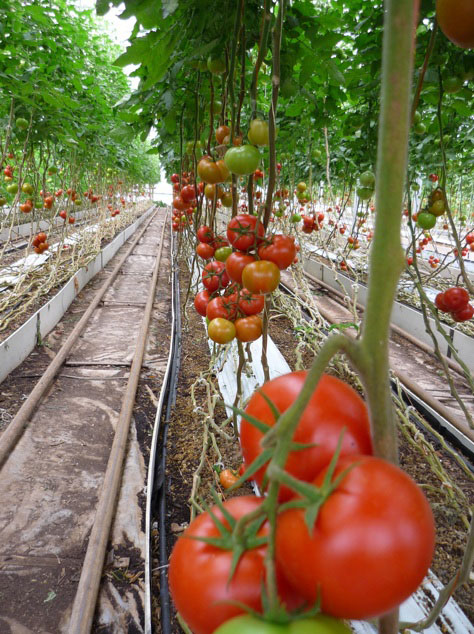 Sunizona family farms in Arizona is a veganic farm. Started in 1996 and family run, the farm produces a variety of greens, cucumbers, tomatos, herbs and a variety of seasonal vegetables, 98% of which are sold only in Arizona.
Sunizona family farms in Arizona is a veganic farm. Started in 1996 and family run, the farm produces a variety of greens, cucumbers, tomatos, herbs and a variety of seasonal vegetables, 98% of which are sold only in Arizona.
The motto behind ‘Veganic Growing’ is simply “growing without cruelty”. This form of agriculture takes any cruelty to animals completely out of the equation. What that means is that no product derived from a confined or slaughtered animal - fertilizer, manure, fish meal, etc. - is used in the growing process.
The idea is that heavy industrial livestock production has a huge impact on the environment and the animals processed live in suffering. So free range animals can be raised on a veganic farm and used to create fertilizers, but no animals will be harmed during any part of the growing process.
To substitute for the bone meal, manure, fish meal and other animal products usually used in organic and other agriculture, veganic farmers use mulch, vegetable compost, green manure, chipped branch wood, crop rotation and polyculture to create greater soil and plant productivity. Veganic farmers also reduce their use of fossil fuels because they try to obtain all the sources of fertility directly on their farm.
Veganic farming is yet another way for farmers to go beyond organic and differentiate their products from the big organic producers. Cruelty free and sustainable.

Jun 5th, 2012 | By Nicole Rogers
What is Food Insecurity?
The World Food Summit of 1996 defined food security as existing “when all people at all times have access to sufficient, safe, nutritious food to maintain a healthy and active life”. Food insecurity certainly isn’t a new thing, since the dawn of humanity there have been those who don’t know where their next meal is coming from. That insecurity can range in severity from occasional meal uncertainty to full blown famine. One factor in the IPC Acute Food Insecurity Reference Table that determines the breaking point between Phase 1 mild food security and Phase 2 stressed food insecurity is the likelihood that someone suffering from food insecurity might break the law in order to eat or provide food for one’s family.
According to the World Health Organization, food security is built on three pillars:
With plenty of food on grocery store shelves in the United States, it’s not surprising that food access and poverty are the issues deeply affecting food insecurity in America. A USDA study indicated that in 2010, 17.2 million households in America had difficulty providing enough food due to a lack of resources. Among the Americans suffering from food insecurity are hardworking people who simply don’t always make enough to feed their family, children and seniors. With rising food prices, food insecurity in the US isn’t going away.
Map courtesy FeedingAmerica.org.
Why does it matter?
The fact remains that 16 million children in the United States lived in food insecure households in 2010, according to the USDA. Hunger isn’t just a matter of discomfort. Good nutrition, particularly in the first three years of life, is important in establishing and maintaining a good foundation that has implications on a child’s future physical and mental health, academic achievement, and economic productivity.
There are public assistance programs and food banks available to help Americans who are currently food insecure, but in a country where nearly 15% of the U.S. population relied on food stamps last year, one might question the sustainability of such a practice. Addressing food waste may be one solution. A 1997 study by the Department of Agriculture figured that about 10 million people a year could be fed through the recovery of just one-fifth of food waste. Check out our post on the topic to learn some ways to cut back on your own food waste.
It is important to address food insecurity in our country now to make sure that the next generation of Americans have the resources they need to be the best they can be.
Jun 4th, 2012 | By Aubrey Yee
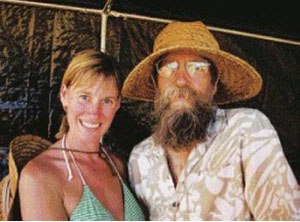 His name is Sun, and he is an organic farmer. Living off the grid, growing myriad vegetables on the island of Kauai, Sun is the living image of what you might expect of a fairytale farmer: big beard, big glasses, big straw hat. With his apprentice Lisa Fuller at his side, One Song Farm has become legendary on the island for their success at turning clay-hardened soil into gardening gold.
His name is Sun, and he is an organic farmer. Living off the grid, growing myriad vegetables on the island of Kauai, Sun is the living image of what you might expect of a fairytale farmer: big beard, big glasses, big straw hat. With his apprentice Lisa Fuller at his side, One Song Farm has become legendary on the island for their success at turning clay-hardened soil into gardening gold.
Once a carpenter managing big jobs in Southern California, Sun moved to Kauai several decades ago and leased some land to begin farming. Rather than just planting seeds, he began tending the soil itself. He started using a technique he calls “double digging” in which the tough soil in each vegetable bed is hand dug down to two feet and then worked with lots of rich organic compost and worms. It’s an admittedly intensive process but one of the secrets to Sun’s long term success. And as he explains, “After about five years it’s a piece of cake. There’s no more tilling (the soil), you just throw seeds at it.”
When Sun first moved to Kauai, he was told that organic farming would never work on the island where large plantation style agriculture had always ruled. Undaunted, Sun charged ahead, his credo “The difficult we do right away, the impossible takes a little bit longer. Once you give the plants what they need, like the right variety, in the right soil, you are going to have produce that you simply can’t believe is so-o-oo good.”
In keeping with Sun’s strong ethic of maintaining a low carbon footprint, the produce grown on One Song Farm can only be found at locally owned grocery stores and farmers markets on the island of Kauai. Recently, One Song Farm hosted a dinner at the farm with foods grown on the farm in concert with local Kauai sommelier and farm-to-table advocate Colin Darrell. Darrell is founder of the Grow Culture initiative, a Hawaii state wide virtual farmers market that aims to connect farmers and consumers in innovative ways online.
To further his organic cause in the islands Sun, along with another local organic farmer Phil Sheldon, created HOFA - Hawaiian Organic Farmer’s Association - which certifies organic farming under the USDA’s National Organic Program Federal Organic Rule.
Clearly living his own labor of love, Sun has built an organic legacy on a beautiful, remote tropical island, which is definitely worthy of storybook status.
Jun 4th, 2012 | By Nicole Rogers
<div class="caption" id="attachment_3574" align="alignnone" width="640"]
What do you get when you mix two bearded Brooklyn chocolatiers (who happen to be brothers), a sailboat captain (and the ship he built in his Cape Cod backyard over 25 years), and a shipment of 20 tons of cocoa sailing from the Dominican Republic to the shipyards of Brooklyn? No, not a Wes Anderson film. You get mountains of red tape, confused Dominican port officials, and a cocoa bean importer flown in to explain why these guys are sailing their cocoa beans on a drug route when it would be much easier to put them on a big ship with hundreds of metal containers.
You also get the beginning of a sea change (sorry, I had to) in the way we think about shipping and local food. Someone had to do it first, and Rick and Michael Mast have paved the way by sailing their annual shipment of cocoa from the Dominican Republic.[^wsj]
http://vimeo.com/23086877
Known for small batches and incredible attention to detail, Mast Brothers Chocolate is the first and only bean-to-bar chocolate operation in New York City, and a proud symbol of the Brooklyn local food movement. The beans are roasted on site, chocolate bars are hand-wrapped in paper printed in-house, and the ingredients include only cocoa, sugar and a few bonus ingredients like sea salt from Maine created using solar salt houses - nothing to mask the complex flavor of the carefully sourced cocoa beans.
The brothers with the apropos surname decided a few years ago to set the goal of shipping their beans on wind power. After all, their business is based on a sort of old-is-new model of simplicity, so why not just sail the beans?
http://youtu.be/w0L2eUFu3q4
As Rick Mast says in the video above, trying to do something that seems simple in such a complex world can be difficult. But as visible members of the local food movement with a product that is decidedly not locally sourced, the Mast brothers have moved heaven and earth to reduce their carbon footprint.
Shipping by sail saved the pollution equivalent of 84 days of travel for a typical passenger automobile. The trailblazing 2011 shipment was the first time a sailing ship had unloaded commercial cargo in New York since 1939. Even with the added expense and headaches of sailing, the brothers plan to, slowly over time, have all of their beans arrive via the power of wind. With experience, each year should make for an easier and more affordable sustainable voyage that is still chocked full of adventure.
Learn more about Mast Brothers Chocolate below.
http://vimeo.com/13664547
[^wsj]: Wall Street Journal: Cocoa Arrives, By Sail
Jun 1st, 2012 | By Nicole Rogers
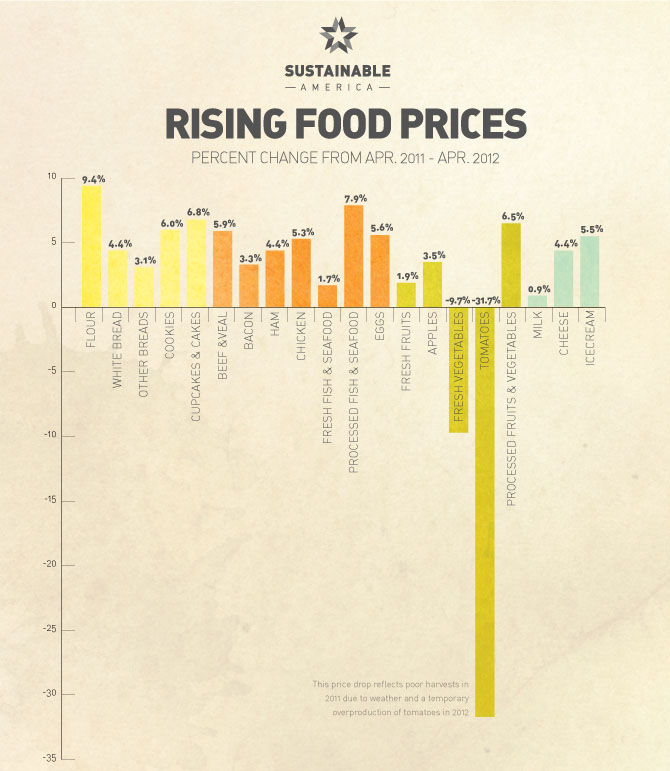
The US Bureau of Labor Statistics released the April 2012 Consumer Price Index (CPI) on May 15, and the numbers on food prices have continued their upward trend as expected. The food at home index (grocery store prices) increased 3.3% since April of 2011, while general food prices were similar - up 3.1% overall.
The price of food has been increasing for years. Total food expenditures in the US increased 3.4% from 2009 to 2010, and the food at home CPI surged 4.8% in 2011.
This isn’t normal inflation, so what is causing the steady uptick in food prices?
Food prices are really a global issue. Countries less dependent on food imports like the US are less affected by global volatility in food prices, but we are not left unscathed. Factors that affect food prices include oil prices, weather, small yields, higher demand, and crops diverted to biofuels.
Much of our food is shipped long distances using a system completely dependent on oil. When the price of oil goes up, typically the price of food goes up too. Food producers and retailers try to absorb as much of that cost as possible until they have to pass it along to consumers.
Unusual weather patterns attributed to climate change have affected harvests worldwide, often producing smaller yields, and sometimes decimating an entire crop. Have you tried to buy a pine nut recently? The price has skyrocketed in the past few years due to a poor crop and increased demand in China, which led them to cut their exports. This story on pine nuts from the Chicago Tribune is a good example of how a few of these factors can dramatically change the price of a given food.
For another good example closer to home, notice the price of vegetables and tomatoes specifically in the graph above. It’s good the price of something is dropping, right? Not so fast. The price drop does reflect a strong supply of fresh market vegetables this year, but it also reflects poor harvests in 2011 due to severe spring freezes that raised the price of tomatoes almost 50% last year. Usually Mexico’s fresh vegetable crop makes up for US freeze damage, but in 2011 the freezing weather went far enough south to affect Mexican crops as well. In addition, there was a temporary, and controversial, overproduction of tomatoes in 2012 that drove prices even lower.
The growth of the economies of countries like China and India have meant a greater demand for certain foods like meat and high quality grains. This increase in demand drives prices for these items, among others, higher.
While biofuels are an important alternative fuel source that could help us decrease our dependence on oil, in recent years large portions of the domestic corn crop has been diverted to biofuel production. The same is true in places like China and India. This means less corn to feed cows, less corn to make into food products, and of course higher demand for corn, which leads to higher prices.
It’s clear that food prices are affected by a complex web of factors from weather to politics to human taste. As the world we live in changes, we will have to be flexible and innovative to keep up with the rising price of food.
Jun 1st, 2012 | By Aubrey Yee
Food Desert Locator from the USDA
## What is a food desert?
It’s an area where healthy, fresh food is difficult to obtain. There are increasing areas of America today where the only convenient place to buy food is a convenience store….which means a dearth of healthy, fresh whole foods for many Americans. In these food deserts, the supermarkets and the fresh food have simply moved out of town.
The USDA created this Food Desert interactive map. You can click on any shaded area to find out the population there without access to fresh foods as well as interesting and useful facts like the number of people in that area who are low-income or children ages 0-17.
Where the easiest thing to buy is chips, soda or a fast food burger one would think that rates of obesity and other diet related health issues are rising. But in fact, recent studies cited in articles by Mother Jones, the New York Times, and the Atlantic magazine have shown that income rather than access to fresh and healthy foods plays a greater role in obesity rates. What does that mean for policy makers and non-profits trying to tackle the obesity problem? Perhaps access isn’t the only issue…
- Access: healthier foods are less available
- Cost: healthier foods cost more
- Skills: healthier foods require preparation and cooking
- Equipment: cooking healthier foods requires kitchen facilities, pots, and pans
- Transportation: even if stores are available, they might be too far away
- Quality: even if stores sell fruits and vegetables, they might not be fresh
- Marketing: fast foods, snacks, and sodas are heavily marketed in low-income areas
(from The Atlantic)
Of these, it seems that cost might be the number one stumbling block on the path to healthier eating. When given the choice between fresh vegetables to cook into a stew or a drive through $1 fast food menu, you can imagine the more common choice for a cash-strapped, time-strapped, recession riddled, working family of four. It seems we’re going to have to find ways to make fresh healthy foods not only more accessible, but also more convenient and inexpensive like their Mc-counterparts.
May 31st, 2012 | By Aubrey Yee
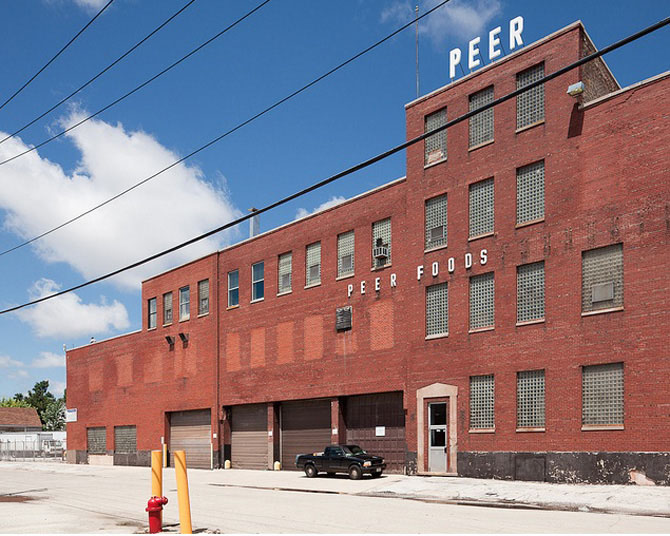
Imagine that decrepit old building you drive by every day on your way to work, the one with the cracked windows and cobwebs visible in the morning light, transforming into a vertical farm that produced tons of delicious fresh food and literally zero waste. Sound like a dream? Well in Chicago’s meatpacking district this vision has become reality. There you can find “The Plant”, a 93,500 square foot old meatpacking plant that entrepreneur John Edel has transformed into a co-op vertical farm and food business incubator.
Because of its history in meatpacking, the building already contained food-grade materials which allow for legal and safe food preparation (no asbestos here!) With an eye towards bringing manufacturing jobs back into the city, Edel decided to stick entirely with food in his building.
Inside “The Plant”, a name with now double meaning, there are a few bakeries, a kombucha tea brewery, tilapia fish farm, mushroom garden, and three aquaponics farms. Now they want to add a brewery so that the grain waste from brewing beer will be able to feed the fish farm, and the waste from the fish will feed the mushroom farm and the plants will clean the water and send it back to water the fish. No waste, everything is used…
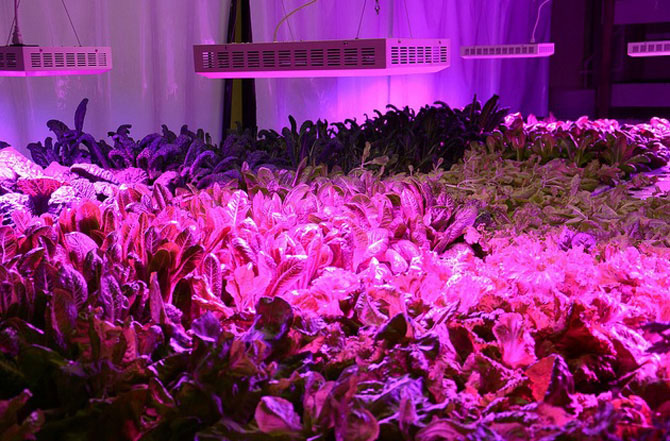
If you’re in Chicago, you can tour The Plant to see how things run or even give a few hours as a volunteer to learn some new skills. And if you’re really ambitious, find out a way to convert your local urban eye sore into a wonder house of food production for your community.
May 28th, 2012 | By Aubrey Yee
Nestled in the redwoods of northern California’s Mendocino county is the small town of Willits. This community is the home of the farming pioneers Ecology Action, and the home of their Grow Biointensive mini-farm.
Founded in 1971, Ecology Action was first headquartered in Palo Alto, CA. The project’s original aim was and still is to “teach regular classes, collect data, make land available for gardening and publish information” on the techniques of Biointensive agriculture. The work grew from a collective concern about worldwide starvation and malnutrition as a result of overpopulation.
At the foundation of the Grow Biointensive method are the scientific principles which underlie ancient traditional farming methods such as:
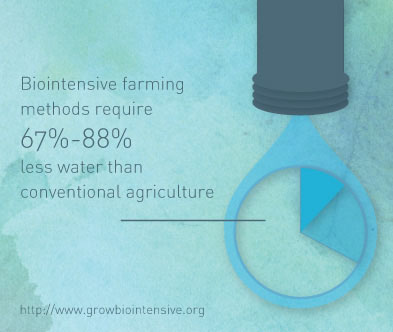 The methods aim to minimize water inputs (done properly this method requires 67-88% less water than conventional agriculture) and produce more food on less land by increasing the soil health and producing food without the use of petroleum or natural gas products.
The methods aim to minimize water inputs (done properly this method requires 67-88% less water than conventional agriculture) and produce more food on less land by increasing the soil health and producing food without the use of petroleum or natural gas products.
According to Ecology Action, “There may be as little as 40 years of farmable soil remaining globally. For every pound of food eaten, 6 to 24 pounds of soil are lost due to water and wind erosion, as the result of agricultural practices.” This means that soil health should be a top priority for anyone passionate about food security for the future.
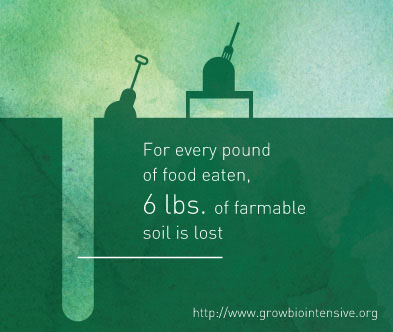 The group now holds workshops at the farm in Willits and at other locations around the country teaching others how to grow more food with less space, save water and replenish soil during the process.
The group now holds workshops at the farm in Willits and at other locations around the country teaching others how to grow more food with less space, save water and replenish soil during the process.
